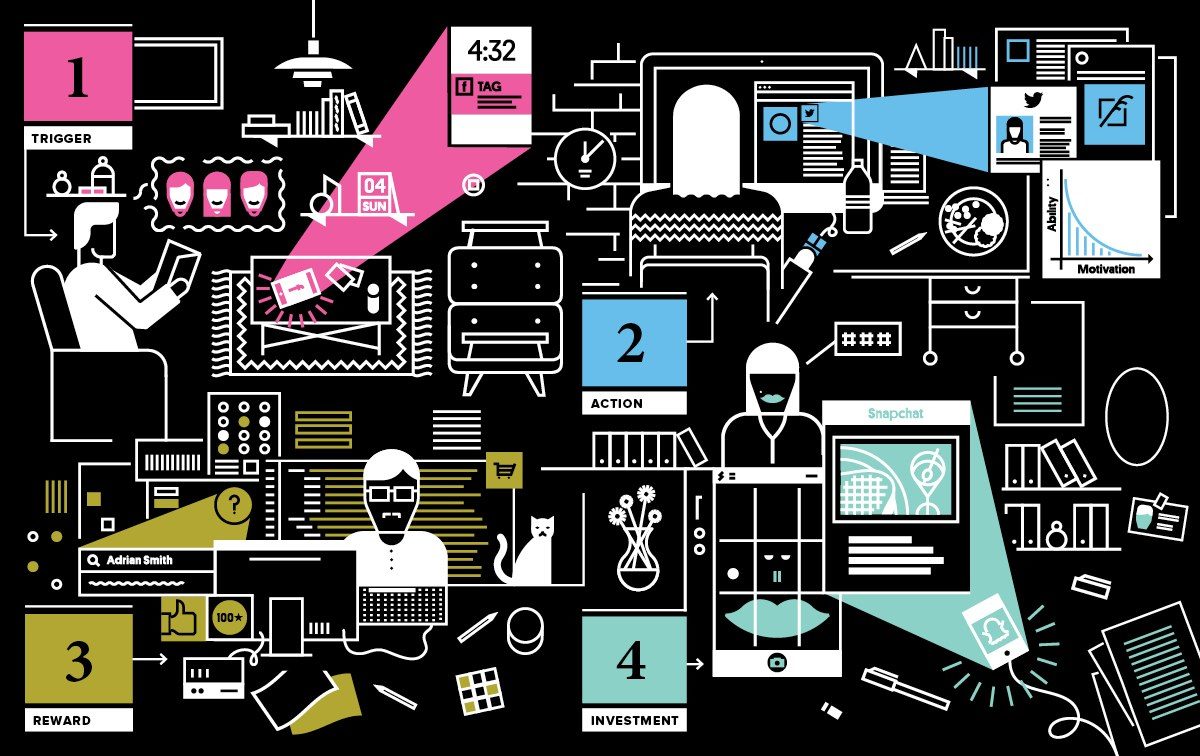Most technology companies create more revenue if you spend more time on their product. Because of this it is important for companies to get you to use their product as much as possible. The most successful companies are those that come to mind first if you experience a certain feeling. I will illustrate this with a few examples.
When I want to find something that I can find online, I will Google it.
When I am feeling bored, I will scroll my Facebook feed.
When I want to share a memory, I will post a picture on Instagram.
When I need transportation, I will book an Uber.
These are all examples of companies that have successfully created a habit of using their product at a specific moment for me. Habits are behaviors done with little or no conscious thought and they guide near half our daily actions. In his book ‘How to build habit forming products’, Nir Eyal and Ryan Hoover (2014) present a practical framework on how to build these habits (Figure 1). It is a continuous loop that increases customer lifetime value, allowing companies to increase prices, and supercharges growth.
note: adapted from “Sam, S. L. (2016). Nir Eyal: The Psychology of Building Addictive Products. Retrieved from https://medium.com/startup-grind/nir-eyal-why-you-are-addicted-to-facebook-slack-pinterest-468a86eb562”

Figure 1: The Hook Model
To briefly illustrate how this loop works I will apply it to a well-known example. I am feeling bored. As I explained earlier, this triggers me to open up Facebook. However, to become first to mind, Facebook also often triggers its users with notifications. Once the trigger made me aware that I need to use the product it is important to get the user to perform some kind of action. Facebook uses the ‘Like’ button to reduce the effort for the user to perform an action. Now it is important to reward the user for its behavior. Research (Ferster & Skinner, 1957) shows that a variation of rewards significantly increases the effect of the reward. Facebook does this very well. If you scroll down your newsfeed the posts by your friends can be identified as variable rewards. Furthermore, the incoming likes and comments on your most recent post are also considered a variable reward. The investment phase is most important in the first loops the user goes through. This is about the user investing in increasing the chance of repeating the loop. This includes entering or updating your profile information. For me, a person who has been using Facebook for over ten years, the best example of an investment is uploading a picture. This typically increase the amount of interaction with the app for a few day as it increases the amount of triggers I am experiencing.
Sources:
Eyal, N., & Hoover, R. (2014). Hooked: How to build habit-forming products. San Francisco: N. Eyal.
Ferster, C. B., & Skinner, B. F. (1957). Tandem schedules. Schedules of Reinforcement.,420-463. doi:10.1037/10627-008
Sam, S. L. (2016, June 02). Nir Eyal: The Psychology of Building Addictive Products. Retrieved from https://medium.com/startup-grind/nir-eyal-why-you-are-addicted-to-facebook-slack-pinterest-468a86eb562

